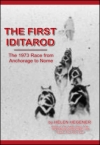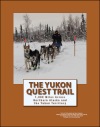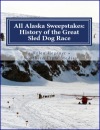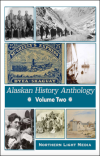
Coal mines at Chickaloon, north of Palmer
Alaska’s Coal History:
How Coal Played a Role
“Coal played a strategic part in the history and early development of Alaska.” L.J. Campbell, Alaska Railroads (Alaska Geographic V. 19, No. 4, 1992)
Alaska’s railroad history has been interwoven with Alaska’s coal resources almost from the beginning, and the black rock has driven the development of the Alaska Railroad since the days of its smaller predecessors. Historian William H. Wilson considered it such an important part of the story that he dedicated an entire chapter to it, The Lure of Coal, in his classic work, Railroad in the Clouds: The Alaska Railroad in the Age of Steam, 1914-1945 (Pruett Publishing, 1977). Wilson eloquently opened the chapter with these lines:
“The coal lay folded into rock, bound where the violent primeval pressures had formed it. It lay in black scars across bleak cliffs, exposed by centuries of wind and water. Long before men discovered Alaska’s great fields, they knew that some coal was there. They found it in abundance in much the same way as they found rich gold: sometimes by chance, sometimes by intuition, sometimes by careful prospecting.
“Coal worked only a little less magic than gold. Although it could not drive men mad in the search or possession of it, Alaska coal bewitched them powerfully. It led a shrewd and wealthy man into a damaging blunder, helped to besmirch official reputations, and hastened the downfall of a president and his party.”
There were two huge coal deposits which played major parts in the Alaska Railroad’s history and development. The first was located along the Matanuska River, 25 to 30 miles north of Palmer, where coal tested by the U.S. Navy in 1914 would be found suitable for naval use. The Eska Mine at Sutton opened in 1917 and soon reported a daily output of 35 tons; that same year the Anchorage Chamber of Commerce reported two Matanuska area coal companies were producing 200 tons daily. The Evan Jones Coal Mine would open in 1920 and supply coal to the military bases near Anchorage until 1960.

Jonesville Coal Mine (Stan Stark photo)
The following year, 1921, a huge coal washing plant would be constructed at Sutton by the Alaska Engineering Commission, and the Navy’s Alaskan Coal Commission would build a coal mining camp with a school, hospital, and housing for the miners’ families at Chickaloon. Ironically, these government operations would close three years later, before they were fully functioning, when the Navy converted its coal-fired ships to oil.
The other large deposit was the Nenana coal field near Healy, north of Mount McKinley National Park. Commercial development began in 1914, four years before the railroad would reach Healy. Far-sighted businessman Austin E. “Cap” Lathrop headed the Healy River Coal Corporation at Suntrana, and by 1940 Lathrop’s mine would be producing half of all the coal mined in Alaska. The Healy River Coal Co. would eventually become part of the Usibelli Coal Mine, one of the largest in Alaska.

Coal and gold areas
There were other great coal fields in the Territory, such as the Cook Inlet Coal Fields which led the industrious Homer Pennock to found the town of Homer on the southern tip of the Kenai Peninsula. There were numerous coal mines along the Yukon River which fueled the great sternwheelers plying its waters with freight for the Alaska Commercial stores and hopeful gold seekers en route to the next rich diggings. Hundreds of small-scale coal mines operated, as coal was needed for such disparate uses as cannery operations, thawing frozen ground for placer gold mining, and keeping the federal government’s revenue cutters moving through Alaskan waters.
Edwin M. Fitch wrote in The Alaska Railroad (Frederick A. Praeger, 1967): “Access to Alaska’s coal was almost universally thought to be a guarantee of success to Territorial railroads that were linked to coal lands. But Congress seemed to be guarding against exploitation whether good or bad.”
Fitch was referring to a series of events which began in 1895, with an appropriation by Congress for the initial surveying of Alaska’s mineral resources by the U.S. Geological Survey. Over time the Alaskan coal fields would prove to be among the largest in the world.

Editorial cartoon portraying the Morgan-Guggenheim Alaska Syndicate
In 1900 the government extended its mining laws to the Territory of Alaska, which allowed prospectors to stake mineral claims, including coal, on the surveyed lands. Three years later the Bering River coal fields on the eastern edge of the Copper River delta were mapped, and the next year, 1904, saw passage of the Alaska Coal Act, which eliminated the requirement that coal claims be on government surveyed land. Almost a thousand coal claims were were filed in the area, leading to legitimate accusations of collusion and attempts to circumvent the laws as the powerful Morgan-Guggenheim Alaska Syndicate moved to consolidate claims with the aid of Secretary of the Interior Richard A. Ballinger.
Leading the charge against Ballinger and the Morgan-Guggenheims was conservationist Gifford Pinchot, the first Chief of the U.S. Forest Service, who withdrew a huge swath of land in south central Alaska which included the controversial Bering River coal claims. The resulting Ballinger-Pinchot affair in 1910 involved the illegal transfer of federal coal claims to the Morgan-Guggenheim Syndicate. It culminated in a Congressional investigation, contributed to the split of the Republican party, and helped to define the conservation movement of the early twentieth century. ~•~
An excerpt from:
 The Alaska Railroad: 1902-1923, Blazing an Iron Trail Across The Last Frontier, by Helen Hegener, published in May, 2017 by Northern Light Media. 400 pages, over 100 b/w historic photos, maps, bibliography, indexed. The book can be ordered via PayPal for $24.00 plus $5.00 postage, by clicking here (credit cards accepted). The Alaska Railroad: 1902-1923 is also available at Amazon, IndieBound, CreateSpace, and can be ordered through your favorite bookstore.
The Alaska Railroad: 1902-1923, Blazing an Iron Trail Across The Last Frontier, by Helen Hegener, published in May, 2017 by Northern Light Media. 400 pages, over 100 b/w historic photos, maps, bibliography, indexed. The book can be ordered via PayPal for $24.00 plus $5.00 postage, by clicking here (credit cards accepted). The Alaska Railroad: 1902-1923 is also available at Amazon, IndieBound, CreateSpace, and can be ordered through your favorite bookstore.






























Absolutely wonderful in every regard.
LikeLike
Pingback: Coal Mining in Alaska: Coal Fields of the Alaska Engineering Commission – The Unwritten Record